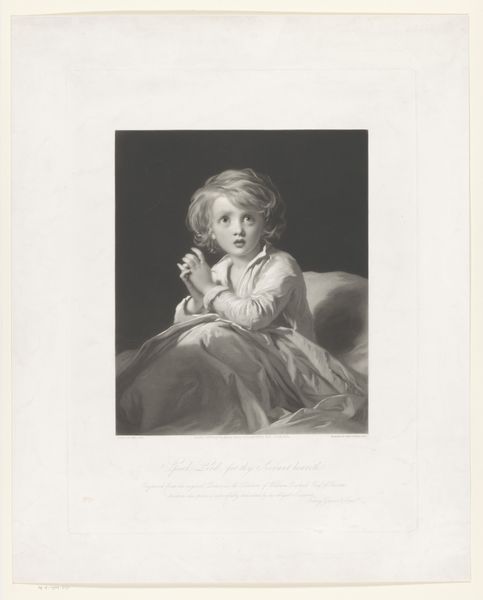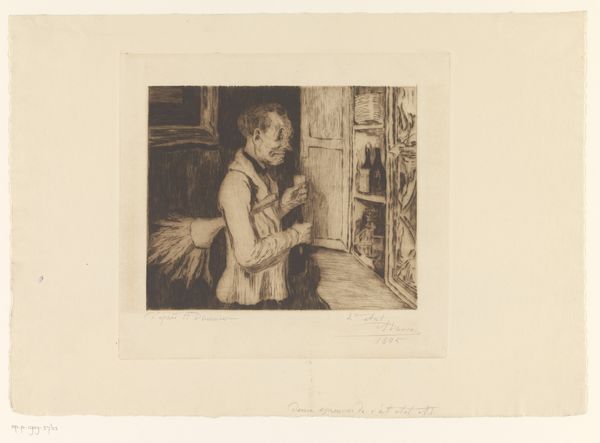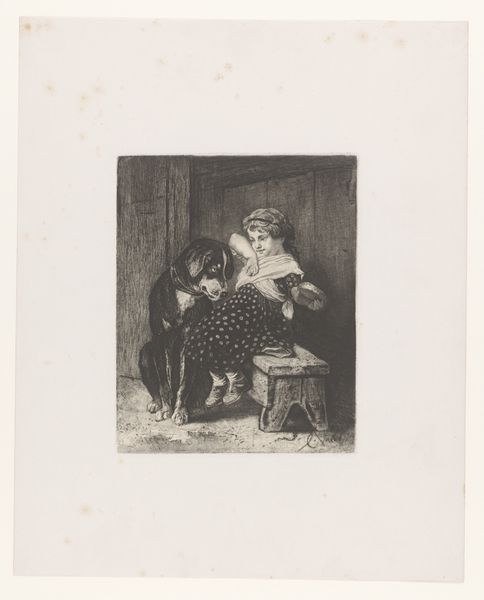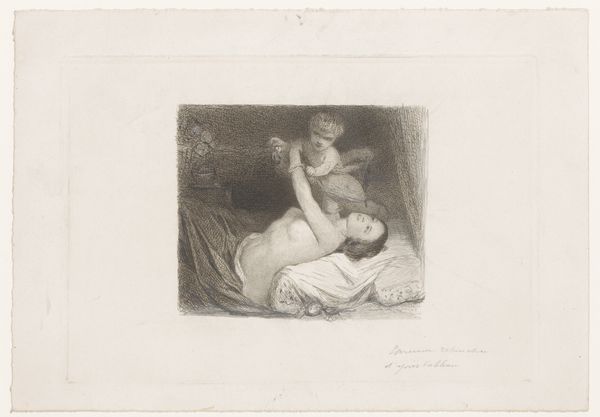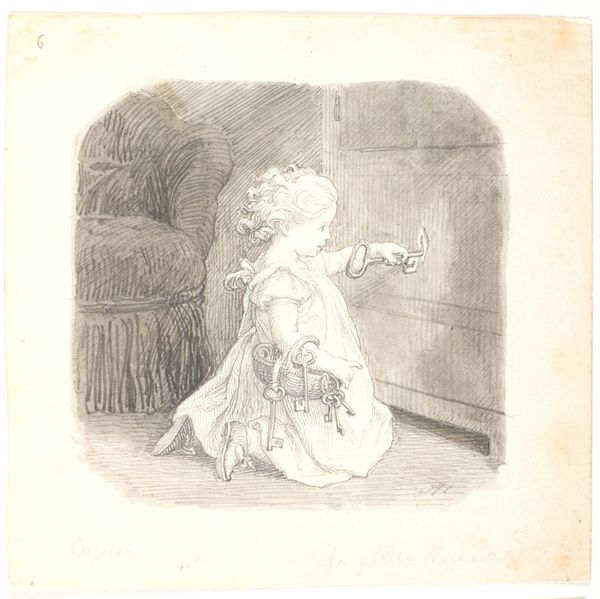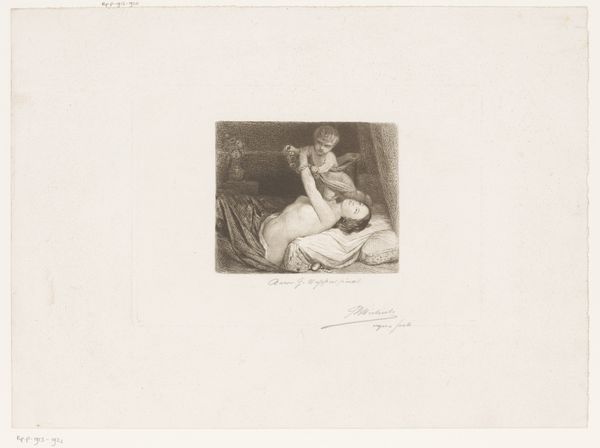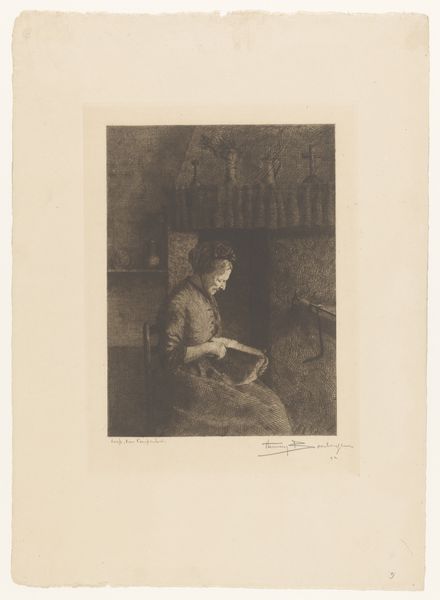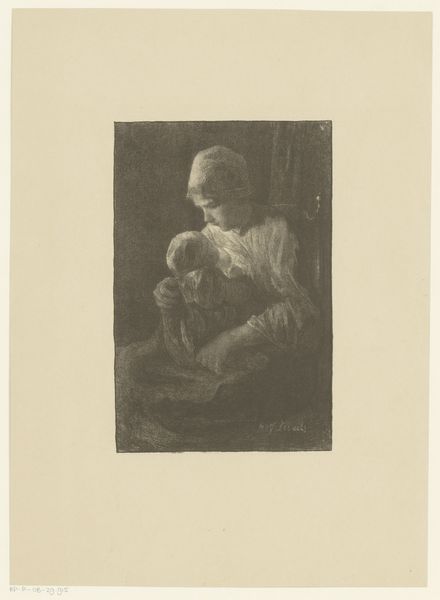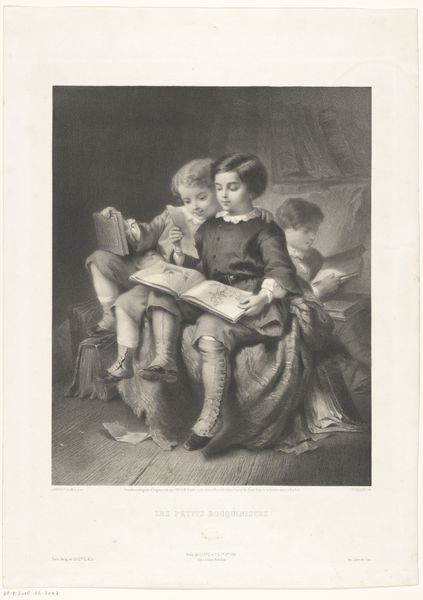
print, engraving
#
portrait
#
print photography
#
animal
# print
#
expressing emotion
#
dog
#
genre-painting
#
engraving
#
miniature
Dimensions: height 325 mm, width 385 mm
Copyright: Rijks Museum: Open Domain
Curator: Here we have "Hond kijkend in de spiegel," or "Dog Looking in the Mirror," an engraving dating to 1797 and created by Nicolo Schiavonetti, housed here at the Rijksmuseum. Editor: My immediate impression is one of staged sweetness, with an underlying tension. The dog is snarling, seemingly at its own reflection, while being held by what appears to be a cherubic child. The whole composition feels carefully arranged, more about an idea than reality. Curator: That tension you're picking up on is fascinating when considered within the printmaking process of the time. The engraving would have been meticulously planned, each line and mark carefully etched into the metal plate, which demanded incredible skill and labor to mass produce these images. Editor: Absolutely, and I wonder about the social context of such an image. Prints like these were readily available. Were they intended to amuse the rising middle class with a kind of accessible narrative scene? And how might that impact the perception and status of animals in domestic settings? Was it anthropomorphism, or simply documentation? Curator: The commodification of imagery through printmaking undoubtedly changed the way people viewed and consumed art, contributing to the accessibility and wide dissemination of genre scenes like this. Consider also the use of light and shadow – how does the artist create a sense of depth and form using only line and the absence of line? Editor: It’s an intriguing study in contrasts; the innocence of childhood versus the implied aggression of the dog. I would ask, does this reflect larger power structures and anxieties of the period, even subconsciously? The small dog perhaps standing for the little guy finally roaring against injustice? Curator: Nicely put! We also cannot ignore the market forces shaping art during this period, even at the turn of the 19th Century. Prints like this provided both a commodity, and also could have operated as propaganda; or provided status to an elite buyer who did not require prints, to now purchasing them as fashionable art, and owning many in bulk. It really recontextualizes the purpose, production and perception of such art. Editor: A wonderful perspective. Considering the social and economic structures surrounding its production certainly highlights previously veiled nuances. Thanks for bringing this history to life. Curator: It’s been enlightening for me as well to reflect upon how materials and mass production democratize this art in some ways.
Comments
No comments
Be the first to comment and join the conversation on the ultimate creative platform.
